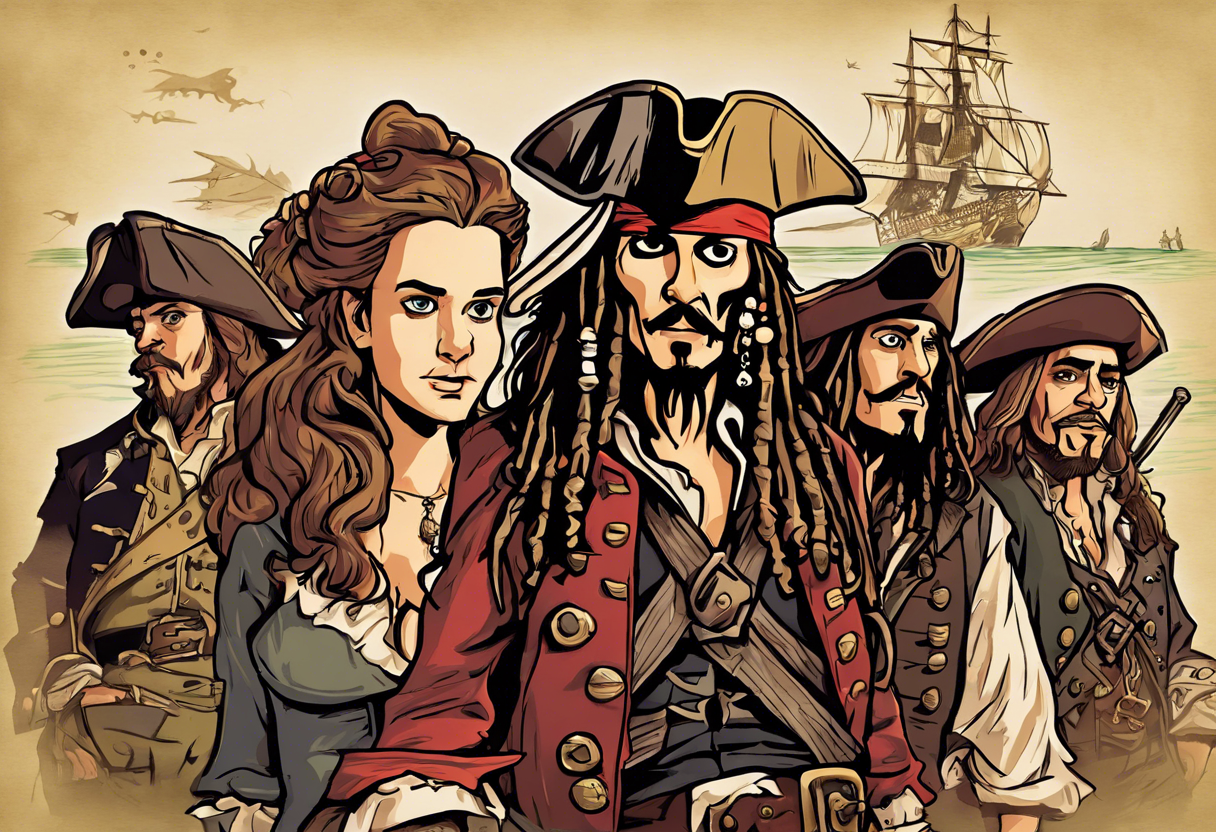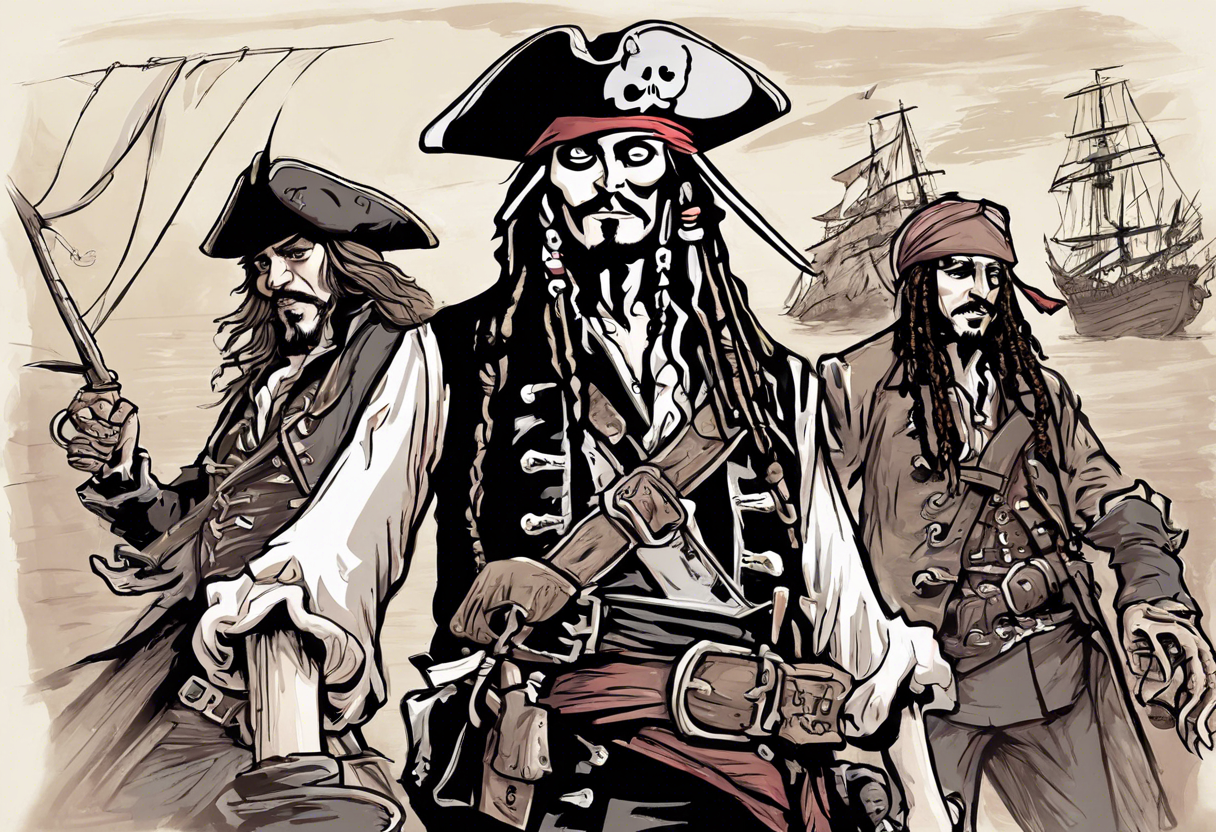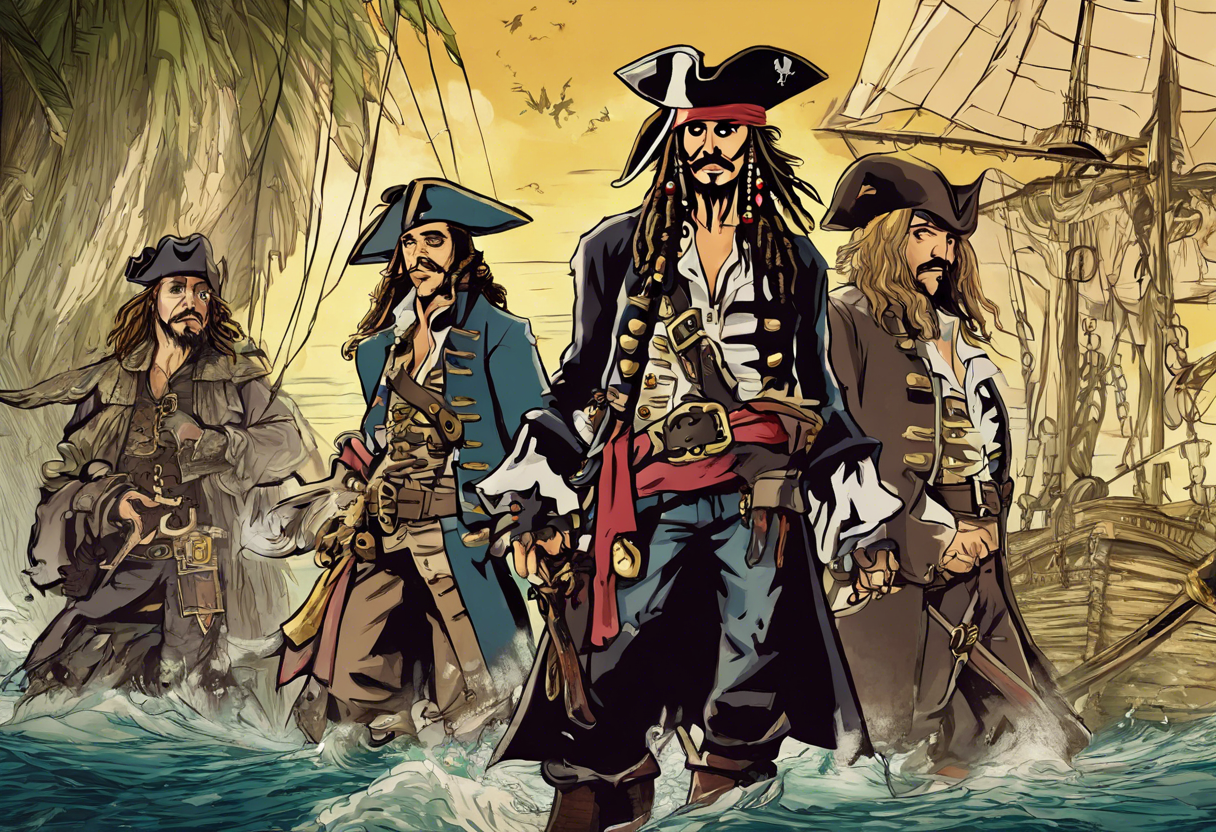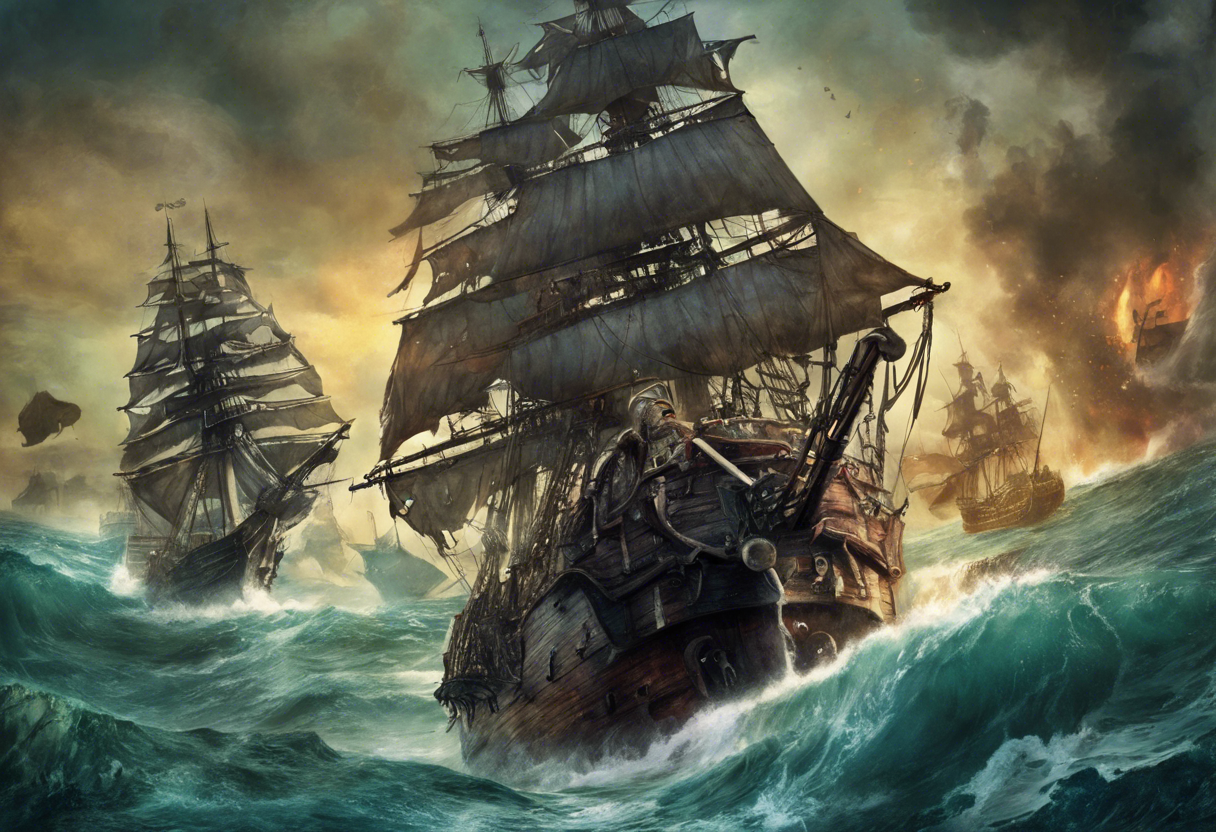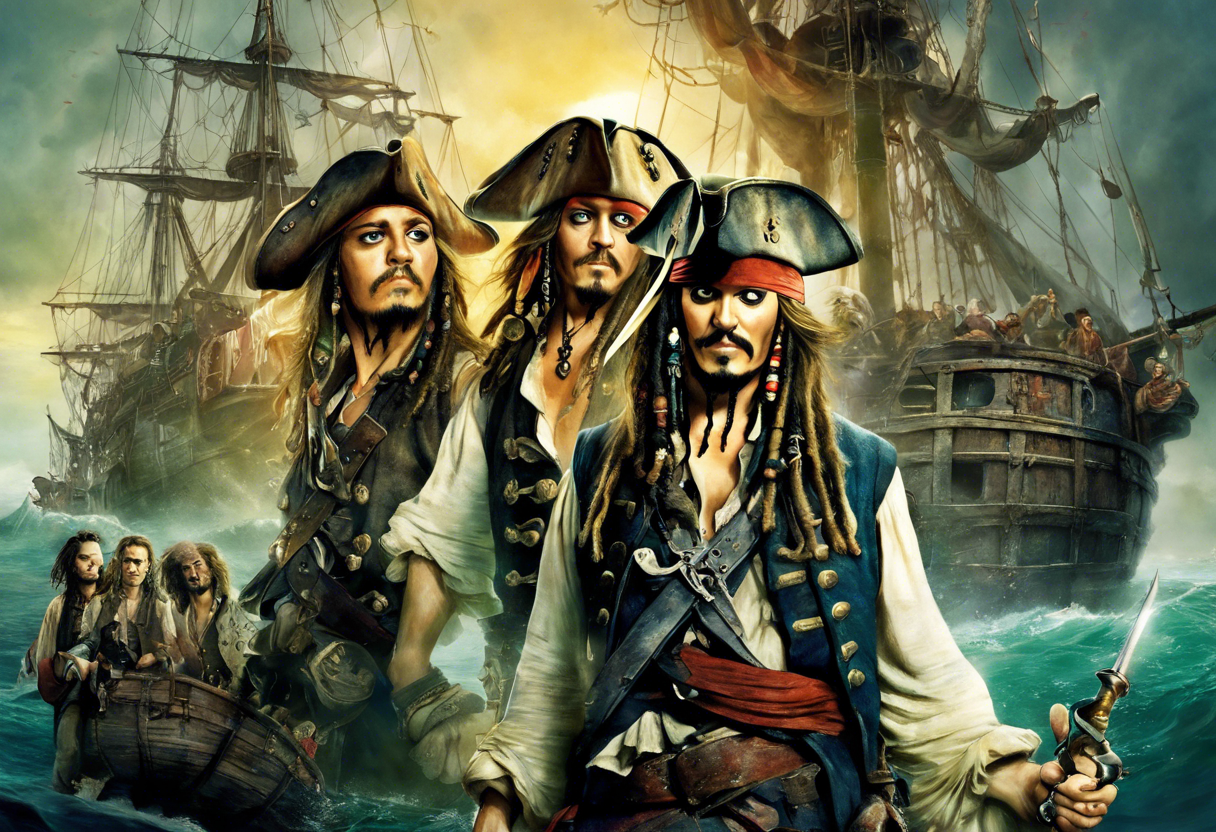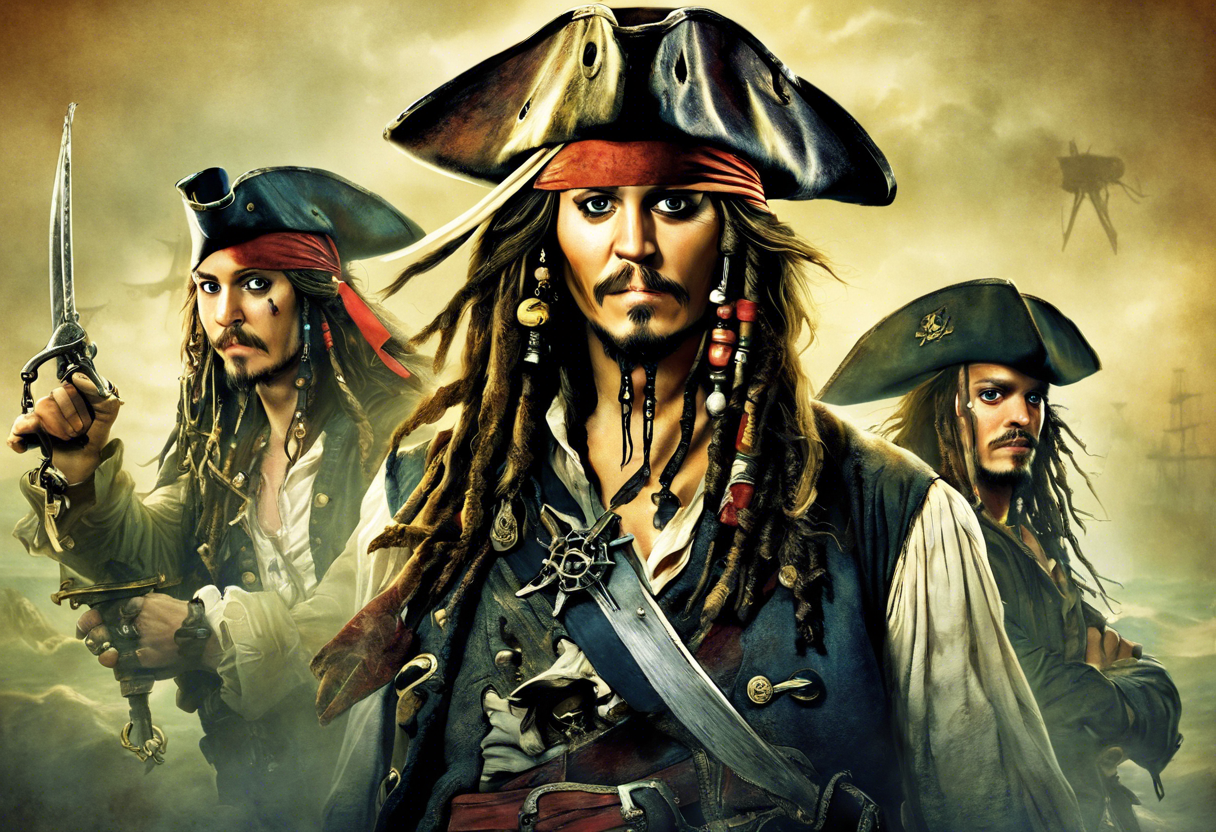Introduction
Pirates of the Caribbean: At World’s End is the third installment in the Pirates of the Caribbean film series, directed by Gore Verbinski and produced by Jerry Bruckheimer. The film was written by Ted Elliott and Terry Rossio, with additional contributions from other writers. Released on May 25, 2007, At World’s End continues the epic adventure that began with The Curse of the Black Pearl and Dead Man’s Chest.
The production of At World’s End was marked by its ambitious scale, featuring complex action sequences, extensive use of special effects, and a large ensemble cast. The film stars Johnny Depp as Captain Jack Sparrow, Orlando Bloom as Will Turner, Keira Knightley as Elizabeth Swann, and Geoffrey Rush as Hector Barbossa, among others. What sets At World’s End apart is its intricate plot, rich character development, and the blending of fantasy, adventure, and historical elements, making it a standout in the swashbuckling genre.
Plot Summary
Pirates of the Caribbean: At World’s End is set a few months after the events of Dead Man’s Chest. The story begins with Lord Cutler Beckett of the East India Trading Company executing anyone associated with piracy in Port Royal, including children, in a brutal display of power [2][3].
The main plot revolves around the rescue of Captain Jack Sparrow, who is trapped in Davy Jones’ Locker. Will Turner, Elizabeth Swann, and Hector Barbossa form an uneasy alliance to rescue Jack and convene the Brethren Court, a gathering of nine Pirate Lords from around the world. This court is necessary to address the threat posed by Beckett, who controls Davy Jones and the Flying Dutchman.
The crew’s journey takes them to Singapore, where they meet Pirate Lord Sao Feng, who possesses navigational charts to Davy Jones’ Locker. However, their plans are complicated by betrayals and double-crosses, as each character has their own motivations and desires. Will secretly promises to give Jack to Feng in exchange for the Black Pearl, intending to use it to rescue his father, "Bootstrap Bill" Turner, from the Flying Dutchman [2][3].
As the story unfolds, Elizabeth is mistaken for Calypso, the goddess of the sea, by Sao Feng, and she becomes a key figure in the plot to release Calypso from her human form. The film culminates in a massive battle involving the pirate fleet, the East India Trading Company, and the Flying Dutchman, with the fate of the pirate nation hanging in the balance.
Themes and Symbolism
At World’s End explores several central themes that add depth and complexity to its narrative. One of the primary themes is the struggle between the global pirate brethren and the East India Trading Company, symbolizing the conflict between freedom and oppressive authority. The pirates, often seen as outlaws, represent a desire for autonomy and a rejection of the rigid structures imposed by colonial powers [3].
The film also delves into the theme of love and its various forms. The heart of Davy Jones, which is central to the plot, represents the power of love and the consequences of its betrayal. Calypso, played by Naomie Harris, embodies the power of nature and the spirit of resistance against oppression. Her character highlights the historical and cultural significance of calypso music as a means of communication and resistance among enslaved people in the Caribbean [3].
Another significant theme is the concept of identity and what one truly desires. Tia Dalma/Calypso provides Jack Sparrow with a compass that points to what he truly wants, symbolizing the internal struggle to define one’s desires and values [3].
The film’s use of symbolism is also noteworthy. The character of Davy Jones and the Flying Dutchman symbolize the inevitability of death and the curse that binds those who serve on the ship. The maelstrom that Calypso summons represents the chaos and destruction that can result from the betrayal of trust and the imbalance of power [2][3].
Cultural Impact
Pirates of the Caribbean: At World’s End had a significant cultural impact upon its release. The film was a major box office success, grossing over $963 million worldwide, making it one of the highest-grossing films of 2007. Its success can be attributed to its engaging storyline, memorable characters, and the appeal of its fantasy-adventure genre.
The film’s influence on popular culture is evident in its references in other media, such as music, literature, and other films. The character of Jack Sparrow, in particular, has become an iconic figure in popular culture, symbolizing the charismatic and rebellious spirit of piracy.
However, the film has also been criticized for its portrayal of historical events and its handling of themes related to slavery and colonialism. Some critics argue that the film romanticizes piracy and glosses over the brutal realities of slavery and colonial oppression [4].
Critical Reception
At World’s End received mixed reviews from critics upon its release. While some praised the film’s visual effects, action sequences, and the performances of the cast, others found the plot overly complex and the pacing slow.
The film holds a 45% approval rating on Rotten Tomatoes, with many critics noting that it suffered from the same issues as the second film, including an overly convoluted plot and a lack of focus on character development. However, the film’s fans and some critics appreciated its ambition and the way it concluded the trilogy’s storyline [2].
In subsequent years, the film has been reevaluated, with some critics acknowledging its contributions to the fantasy-adventure genre and its influence on later films.
Legacy
Pirates of the Caribbean: At World’s End has left a lasting legacy in cinematic history. It concluded the original trilogy on a grand scale, setting a benchmark for epic fantasy-adventure films. The film’s success paved the way for future installments in the franchise, including On Stranger Tides and Dead Men Tell No Tales.
The film’s influence can be seen in other movies and TV shows that have followed in its footsteps, incorporating elements of fantasy, adventure, and historical fiction. The character of Jack Sparrow, in particular, has become a cultural icon, inspiring countless imitations and references in popular media.
In conclusion, Pirates of the Caribbean: At World’s End is a film that stands out for its ambitious storytelling, rich themes, and memorable characters. Despite its mixed critical reception, it remains a beloved film that continues to inspire audiences and filmmakers alike.
References
- https://www.pluggedin.com/movie-reviews/piratesofthecaribbeanatworldsend/
- https://en.wikipedia.org/wiki/Pirates_of_the_Caribbean:_At_World’s_End
- https://revoltsnow.wordpress.com/2015/07/12/pirates-at-worlds-end/
- https://sites.duke.edu/blackatlantic/sample-page/contemporary-film-and-black-atlantic/history/disneyfied-histories-disneys-intentional-inaccuracy-historical-films-and-the-black-atlantic/pirates-of-the-caribbean-the-almost-slaveless-caribbean-race-and-the-black-atlantic/
- https://en.wikipedia.org/wiki/Pirates_of_the_Caribbean_(attraction)

